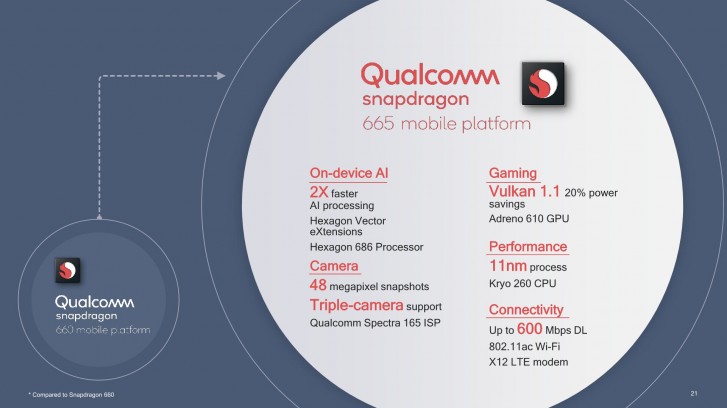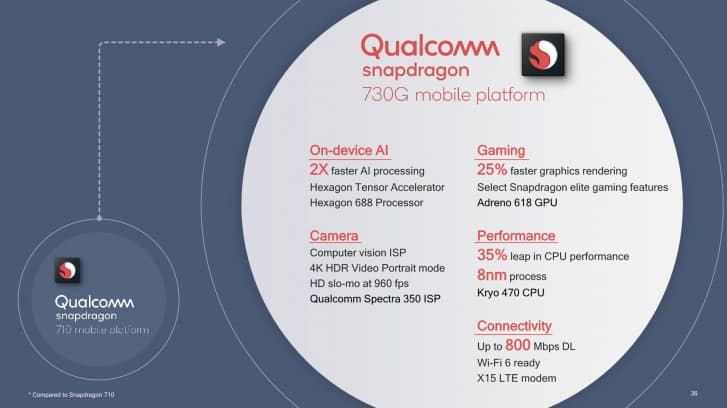US fabless chipset manufacturer Qualcomm has taken the wraps off its latest set of mobile chipsets. The Snapdragon 665 and Snapdragon 730 were announced by the tech giant yesterday. The SD 730 even comes with a second variant dubbed Snapdragon 730G and it is said to pack a 15% improved graphics over its sibling.
Snapdragon 665
The Snapdragon 665 processor is yet another midrange chipset that seems to be positioned as a successor to the Snapdragon 660 chipset. The System-on-Chip is built on a smaller 11nm LPP process and that is expected to translate into some improvements in battery life as well as a reduction in the cost. The SDM665 chipset uses four Kryo 260 cores manufactured on ARM’s Cortex-A73 microarchitecture with a maximum clock speed of 2GHz. This is similar to the SD660 except that the frequency of the 660 is 2.2GHz. The chipset also features four low-power Kryo 260 cores based on Cortex-A53 with a similar 1.8GHz clock speed as the SD660.
The processor teams up with an Adreno 610 GPU and Hexagon 686 DSP which should both bring improvements to the graphics aspect. Further, the Snapdragon 665 utilises the Spectra 165 ISP and as a result, the processor supports up to a 48 MP single main camera, or 16 MP dual snappers, or even triple setups. In an era where multiple cameras with large main sensors are gaining ground, this is another important improvement the 665 has over the 660. The Snapdragon 660 topped out at 24 MP single camera support.
Snapdragon 730 and 730G
The Snapdragon 730 chipset is another improved version of the Snapdragon 710 chipset and may even be a replacement. It is equipped with two ‘big’ Kryo 470 (Cortex-A76) CPU which is an improvement from the Kryo 360 (based on ARM Cortex-A75) CPU on the 710. The maximum clock speed is retained at 2.2 GHz. The SoC still retains the six ‘small’ power-efficient Cortex-A55 cores but with improved 1.8GHz clock speed. These improvements are said to bring an impressive 35% leap in CPU performance.
The Snapdragon 730 chipset has an Adreno 618 GPU firing up the graphics and bringing a 25% increase in its performance. The chipset is also equipped with Hexagon 688 DSP and Spectra 350 ISP. The ISP powers up to a 36 MP single main camera or a 22 MP dual setup and 960fps 720p slo-mo video capture, as well as 4K HDR video Portrait mode. In addition, the new ISP is said to be also capable of computer vision acceleration. While the new DSP equally features Qualcomm’s Tensor Accelerator units for machine learning inferencing. These features were hitherto reserved for Qualcomm’s top-tier Snapdragon 8xx line of SoCs but it is interesting to see them find their way to the midrange segment.
On its part, the Snapdragon 730 is built on Samsung’s 8nm LPP process as against the SD710’s 10nm process. The new smaller silicon is expected to bring some improvements in battery life. Finally, the Snapdragon 730G uses higher clock speed and so, promises 15% better graphics performance compared to the 730. The new processors are all expected to go commercial in the middle part of 2019.


